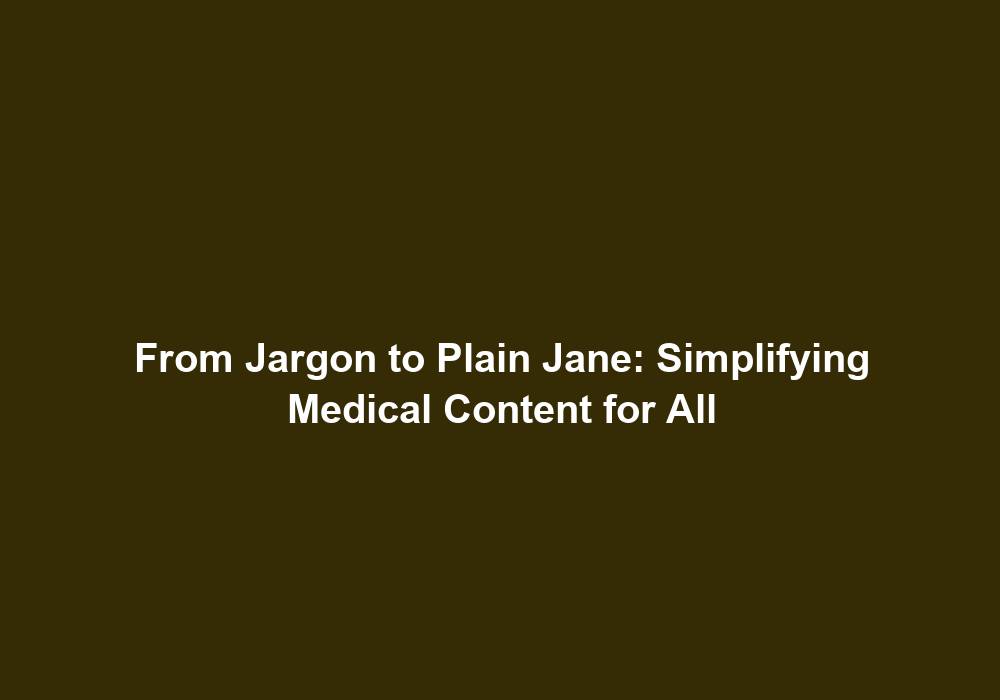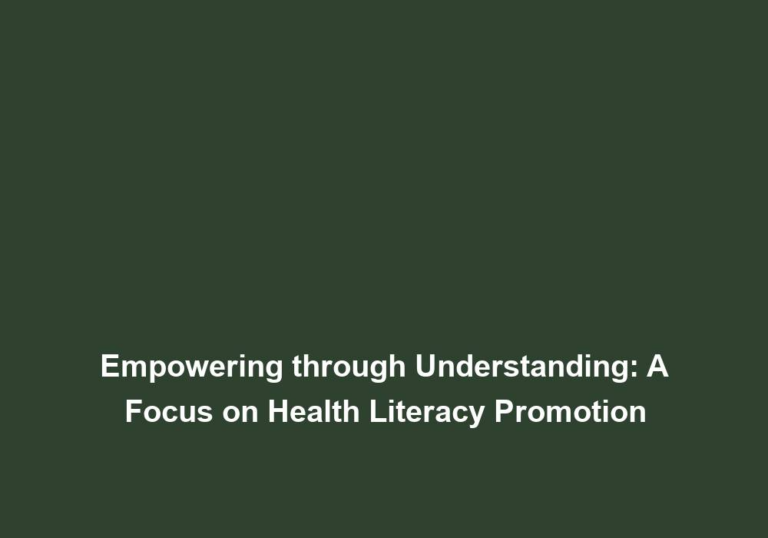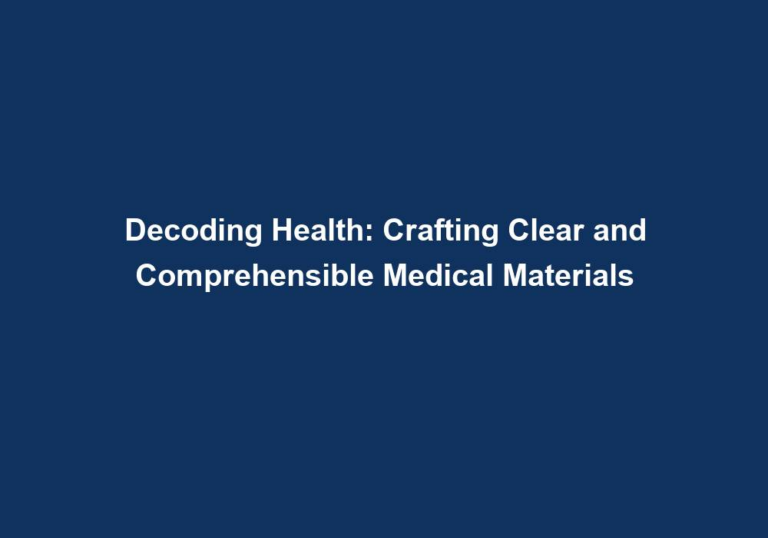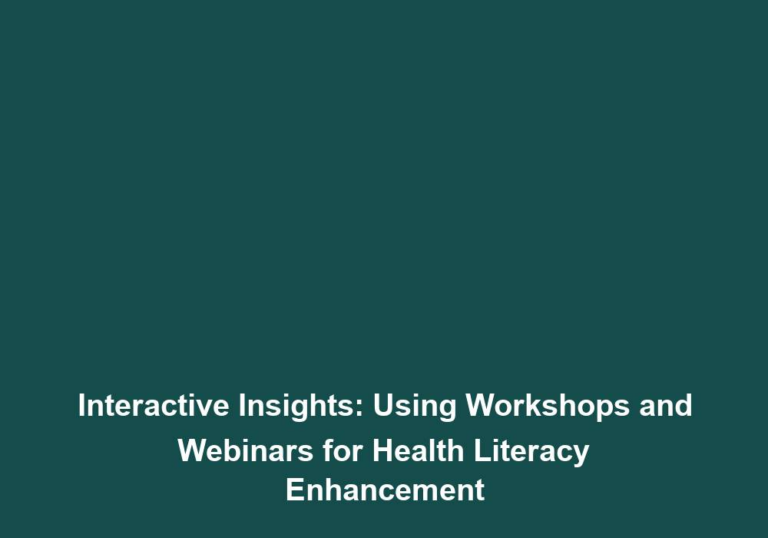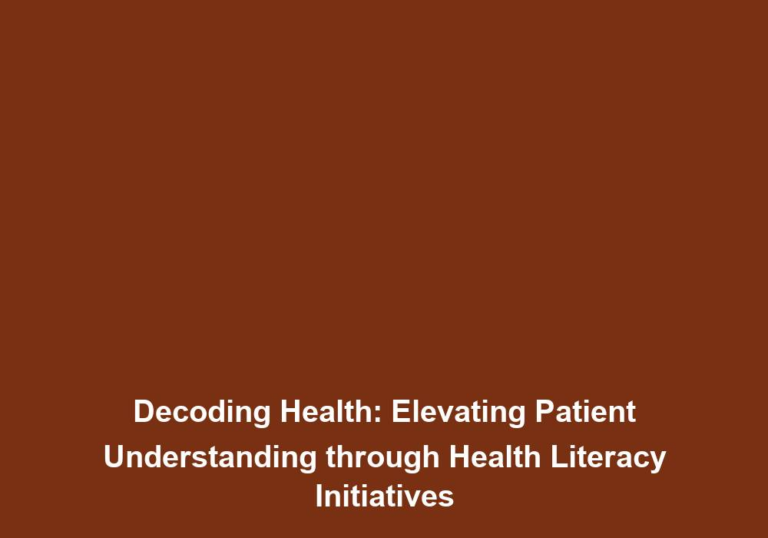From Jargon to Plain Jane: Simplifying Medical Content for All
In the realm of medicine, a language barrier often exists that can deter patients from understanding their own health conditions and treatments. The use of medical jargon and complex terminology can leave patients feeling overwhelmed and confused. As an SEO content writing expert, my goal is to bridge this gap and simplify medical content for all, ensuring that it is accessible and easily comprehensible to patients of all backgrounds and education levels.
The Importance of Simplifying Medical Content
Medical information is vital for patients to make informed decisions about their health. However, the use of technical terms and complex language can create a significant barrier to understanding. When patients are unable to grasp the information provided, they may feel disengaged, anxious, and less likely to comply with treatment plans. By simplifying medical content, we empower patients to take an active role in their own healthcare, fostering a sense of trust and encouraging better health outcomes.
Empowering Patients through Simplified Medical Content
Simplifying medical content is essential to empower patients, allowing them to fully comprehend their health conditions, treatment options, and medication instructions. By using plain and simple language, patients can better understand the information presented to them. This understanding empowers patients to actively participate in their own care, leading to improved treatment adherence and ultimately better health outcomes.
Building Trust and Communication
When medical content is simplified, patients can more effectively communicate their concerns and ask relevant questions. The use of plain language and clear explanations fosters a stronger doctor-patient relationship, as patients feel more comfortable discussing their health issues and seeking clarification. This enhanced communication leads to more productive and meaningful conversations, where patients can actively engage in their healthcare decisions.
Overcoming Barriers and Disparities
Simplified medical content plays a crucial role in mitigating health disparities by ensuring that all patients, regardless of their education or background, can access and comprehend important medical information. This is particularly vital for individuals from marginalized communities who may face additional barriers to healthcare. By breaking down complex concepts into easily digestible information, we bridge the gap and provide equal access to medical knowledge for everyone.
Strategies for Simplifying Medical Content
-
Use Plain Language: The key to simplifying medical content is to use plain and simple language that is easy to understand. Avoid technical terms whenever possible and explain complex concepts in a concise and straightforward manner. By doing so, patients will be able to grasp the information without feeling overwhelmed.
-
Define Medical Terms: When it is necessary to use medical terms, ensure that they are explained clearly and in context. Use simple analogies or examples to help patients relate to the terms and understand their meaning. By providing relatable explanations, patients can better comprehend the information being conveyed.
-
Organize Information: Breaking down complex medical information into smaller, manageable sections is crucial. Use headings and subheadings to create a logical flow of information and guide readers through the content. This helps patients identify and focus on the specific information they need, making it easier for them to absorb and retain the knowledge.
-
Visual Aids: Incorporate visual aids such as diagrams, charts, and infographics to present information in a more visually appealing and easier-to-understand manner. Visual representations can enhance comprehension and make complex concepts more accessible. By utilizing visual aids, patients can grasp information more easily and retain it better.
-
Avoid Acronyms and Abbreviations: Acronyms and abbreviations can be confusing, especially to those who are not familiar with medical terminology. Spell out acronyms and abbreviations on their first mention and provide a brief explanation for clarity. By avoiding the use of confusing acronyms, patients can fully understand the information being presented.
-
Use Real-Life Scenarios: Illustrate medical concepts with relatable real-life scenarios to make it easier for patients to grasp their significance. By using familiar situations, patients can better understand how the information applies to their own lives. Real-life scenarios help patients relate to the information and contextualize it within their own experiences.
-
Provide Context and Background: When presenting medical information, it is essential to provide context and background information to help patients understand the why and how of a particular condition or treatment. This can include information about symptoms, causes, treatment options, and potential outcomes. Providing comprehensive context allows patients to fully comprehend the significance of the information being shared.
-
Address Common Concerns: Anticipate and address common concerns and questions that patients may have. By proactively providing answers to these queries, patients feel more supported and informed throughout their healthcare journey. Addressing common concerns helps alleviate anxiety and provides patients with the necessary information to make informed decisions about their health.
The Impact of Simplified Medical Content
Simplifying medical content has numerous benefits for both patients and healthcare providers.
-
Improved Patient Understanding: By presenting information in plain language and simplifying complex medical concepts, patients can better understand their health conditions, treatment options, and medication instructions. This understanding empowers patients to actively participate in their own care, leading to better treatment adherence and improved health outcomes. Patients who understand their medical information are more likely to make informed decisions about their health.
-
Enhanced Patient-Provider Communication: When medical content is simplified, patients can more effectively communicate their concerns and ask relevant questions. This leads to more productive and meaningful conversations between patients and healthcare providers, fostering a stronger doctor-patient relationship. Open communication promotes trust and allows healthcare providers to better understand their patients’ needs.
-
Increased Patient Satisfaction: When patients can understand and navigate medical information, they feel more satisfied with their healthcare experience. This satisfaction contributes to overall patient engagement and builds trust and confidence in the healthcare system. Patients who are satisfied with their healthcare experience are more likely to actively participate in their care and follow through with treatment plans.
-
Reduced Health Disparities: Simplified medical content helps mitigate health disparities by ensuring that all patients, regardless of their education or background, can access and comprehend important medical information. This is particularly crucial for individuals from marginalized communities who may face additional barriers to healthcare. By providing simplified medical content, we promote equal access to healthcare information and work towards reducing health disparities.
In conclusion, simplifying medical content is crucial for ensuring that patients can fully comprehend and engage with their healthcare. By using plain language, providing context, and employing visual aids, we can bridge the language gap and empower patients to take an active role in their health. As an SEO content writing expert, my mission is to make medical information accessible and understandable for all, ultimately improving healthcare outcomes for everyone.

